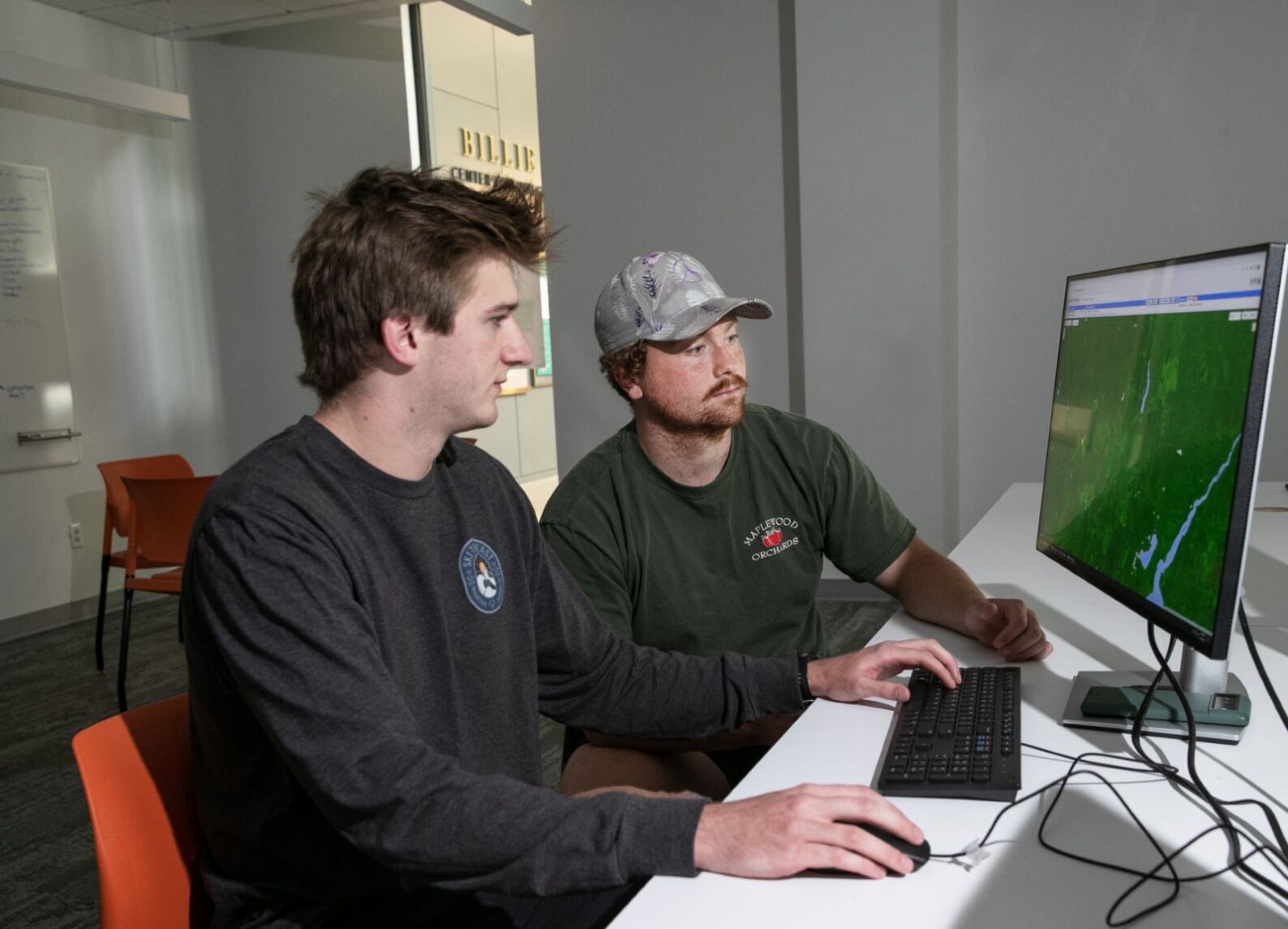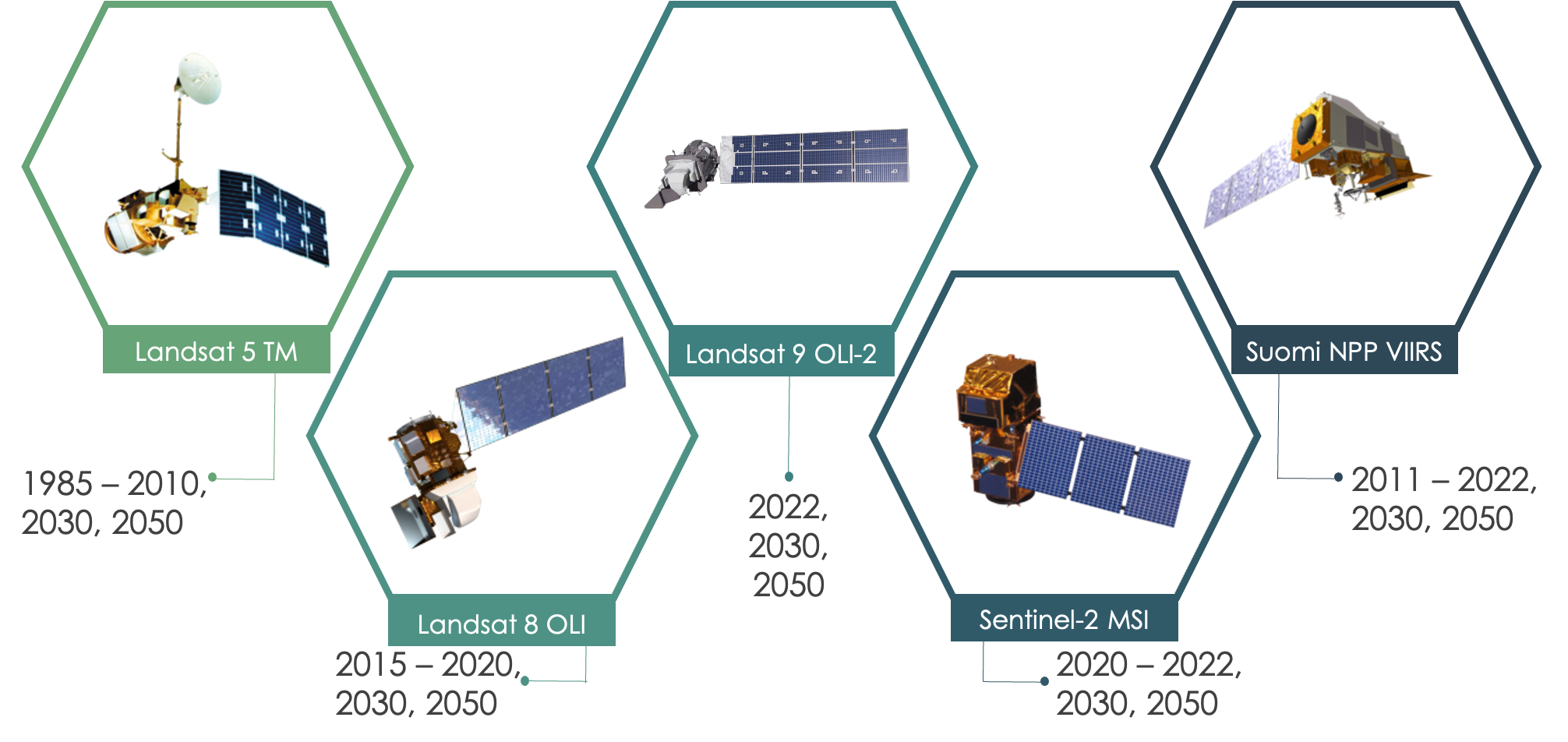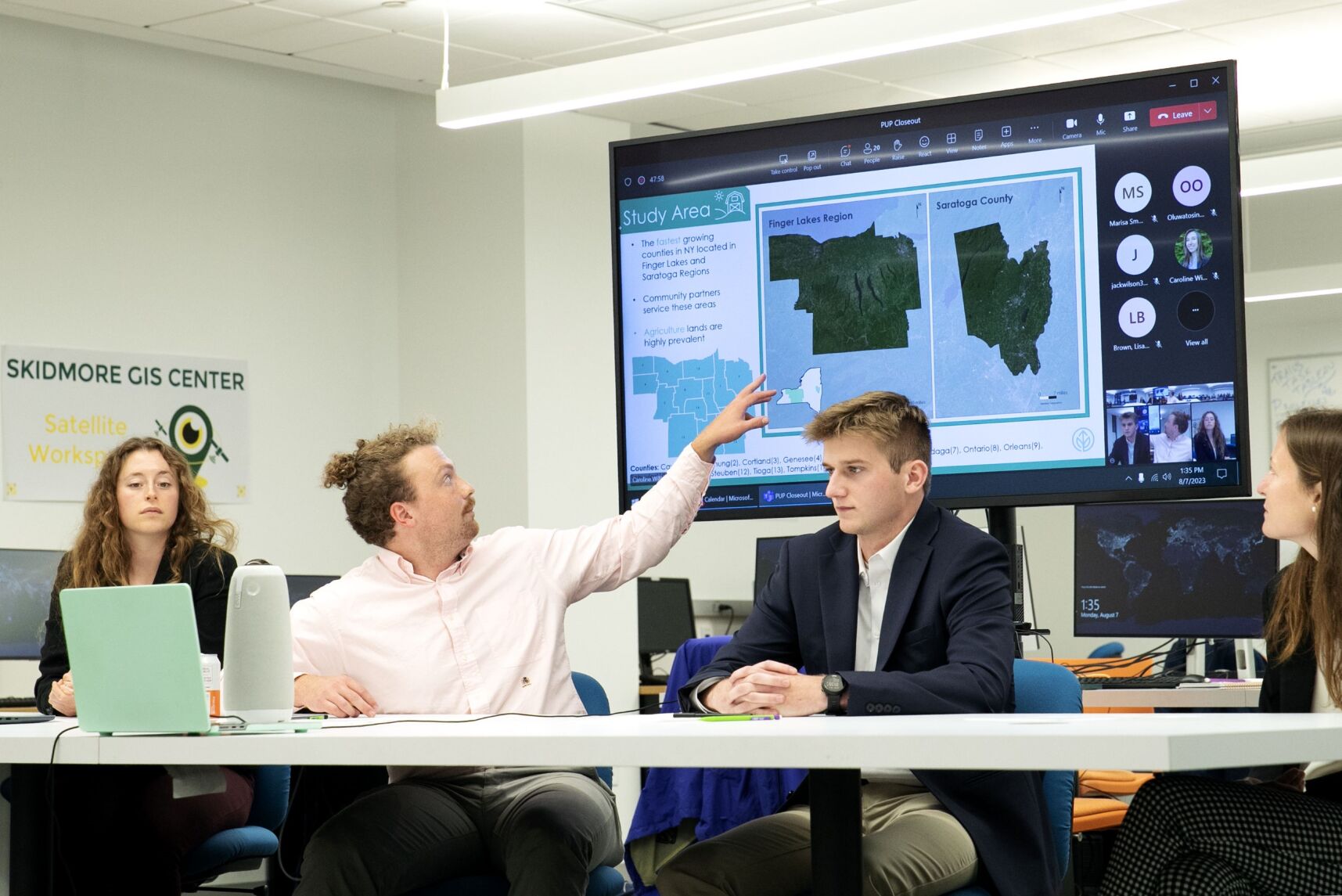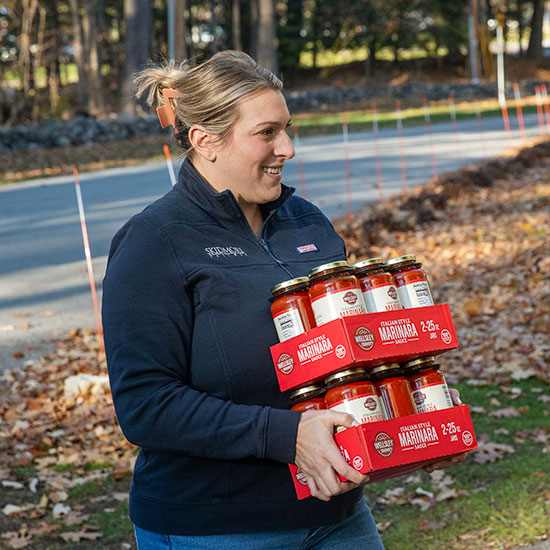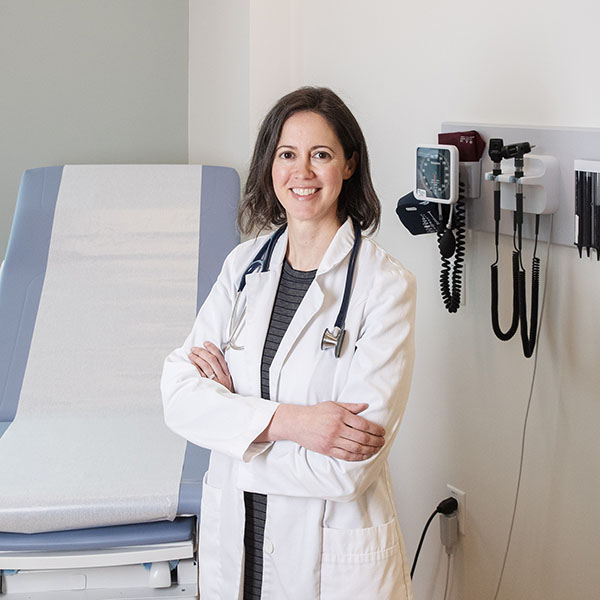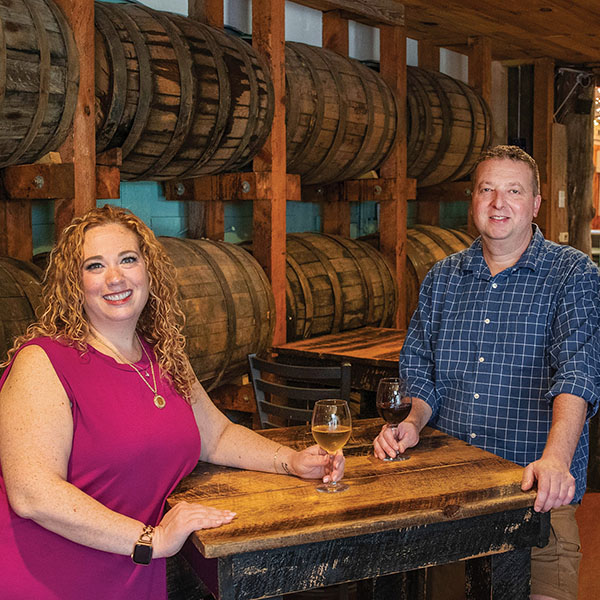Skidmore scientists team up with NASA to support communities' conservation efforts
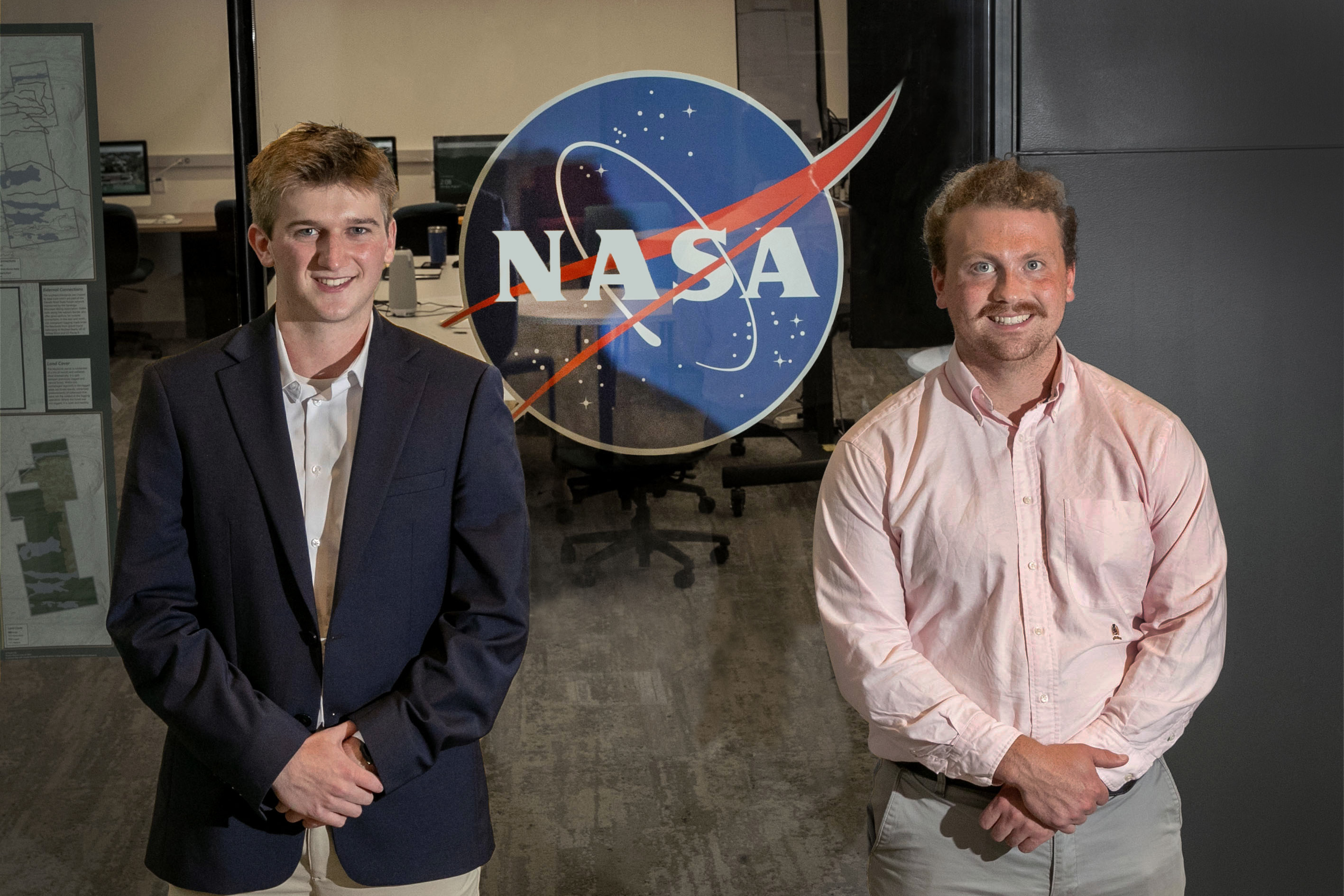
Environmental sciences major Sam Haas ’24 and geosciences major Oliver Wilson ’23 were the first Skidmore students to take part in NASA’s DEVELOP program, gathering information that could prove instrumental in conserving local lands and ensuring environmental protections for years to come.
The goals of DEVELOP are two-fold: to provide experience to the next generation of scientists and contribute to the world’s research on a variety of ecologically relevant topics. Skidmore was selected this year as the first liberal arts college to host a pop-up research hub within the prestigious NASA program, which receives applications from all over the United States.
Wilson and Haas were chosen through an equally selective process to conduct research at the Skidmore campus hub, alongside fellow researchers Sam Schulteis and Stephanie Willsey, recent graduates of Duke University and the University of Maine, respectively. Charlie Bettigole, director of Skidmore’s GIS Center for Interdisciplinary Research, led the team as DEVELOP science advisor, and six new GIS (Geographic Information System) computers were installed in Skidmore’s new Billie Tisch Center for Integrated Sciences (BTCIS), establishing a secondary GIS location beyond Scribner Library for collaboration among students and faculty in the sciences and humanities at Skidmore.
Over the summer, the research team worked closely with the nonprofit conservation organization Saratoga PLAN in Saratoga County, as well as land trusts in the Finger Lakes and Rochester in western New York. Using NASA tools such as satellite data and modeling programs to determine past trends in industrial expansion, the team was able to hypothesize which land areas are most at risk for future development. With their predictions, the land trusts will be able to more accurately evaluate which landowners to approach with conservation easements and work toward preserving key tracts of land.
“We give our partner organizations a way to prioritize how they're going to reach out to farmers and landowners and strategize,” said Bettigole. “We want to protect landscapes. We want to protect this way of life. We want to protect food security in our region.”
Skidmore’s DEVELOP project also set out to identify how local conservation efforts contribute to mitigating climate change. Because agricultural land is unpaved, protecting it supports a variety of climate-friendly services, such as preventing the decline of nutrient-rich soils that help to pull carbon from the atmosphere. The researchers used soil carbon data, impervious surface mapping, and ecosystem service analyses to estimate the amount of carbon dioxide not sequestered if the land had been developed. This information allows land trusts to gauge the climate impact of their conservation work.
“It's kind of difficult to quantify to the average person the value of putting land in a land trust,” Haas said. “Through our research, we were able to put a specific number on that."
Also, being able to just predictably map change for the future — it’s so essential. Even where I'm from originally in New Hampshire, it’s been developing so fast. You learn a lot about environment impact when you pause and look at the how and why.”Sam Haas '24
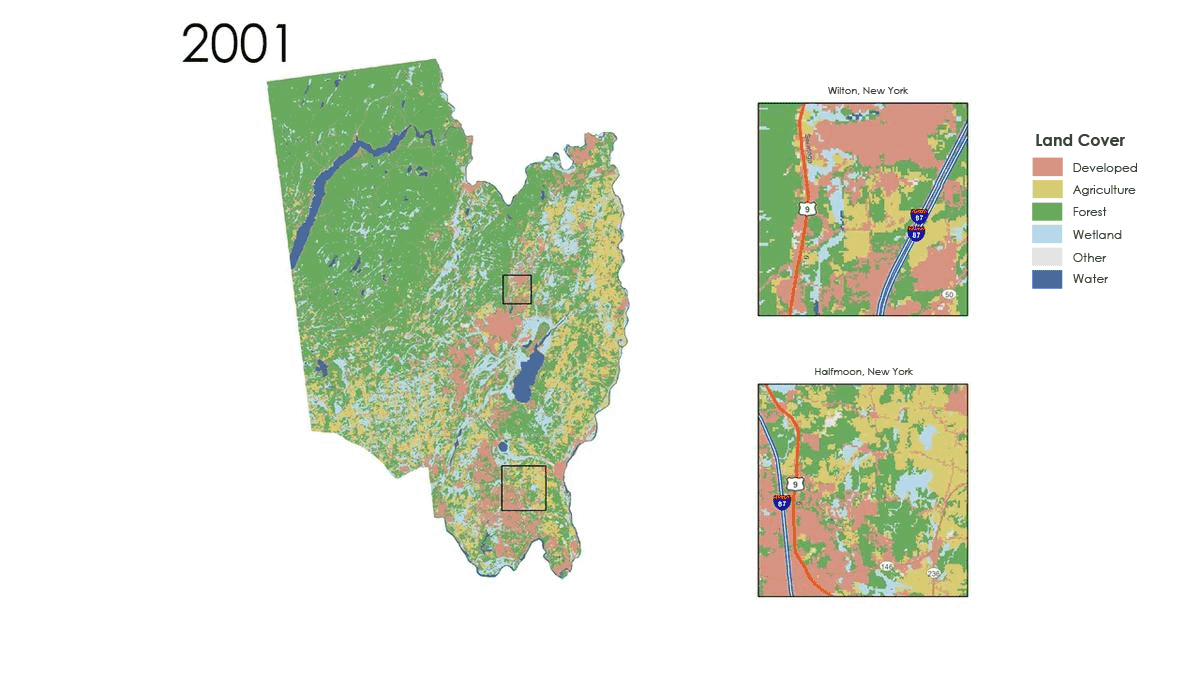
Through prediction mapping, the DEVELOP team was able to determine that the area along Interstate 87 in Saratoga County is at significant risk for further development.
Not only is the project locally focused, but it is also locally founded, originating from Wilson’s spring 2022 GIS assignment at Skidmore.
“The study that my classmates and I conducted had a national focus, and we found that it was way more complex than we had previously thought,” Wilson said. “This realization gave rise to the need to do it on a much smaller scale, and that's where we are today. It's great to see the idea come full circle.”
Wilson’s project was pitched to DEVELOP alongside a few others — including a continuation of the GIS Center’s spongy moth study from last summer — and was selected by NASA’s central program office.
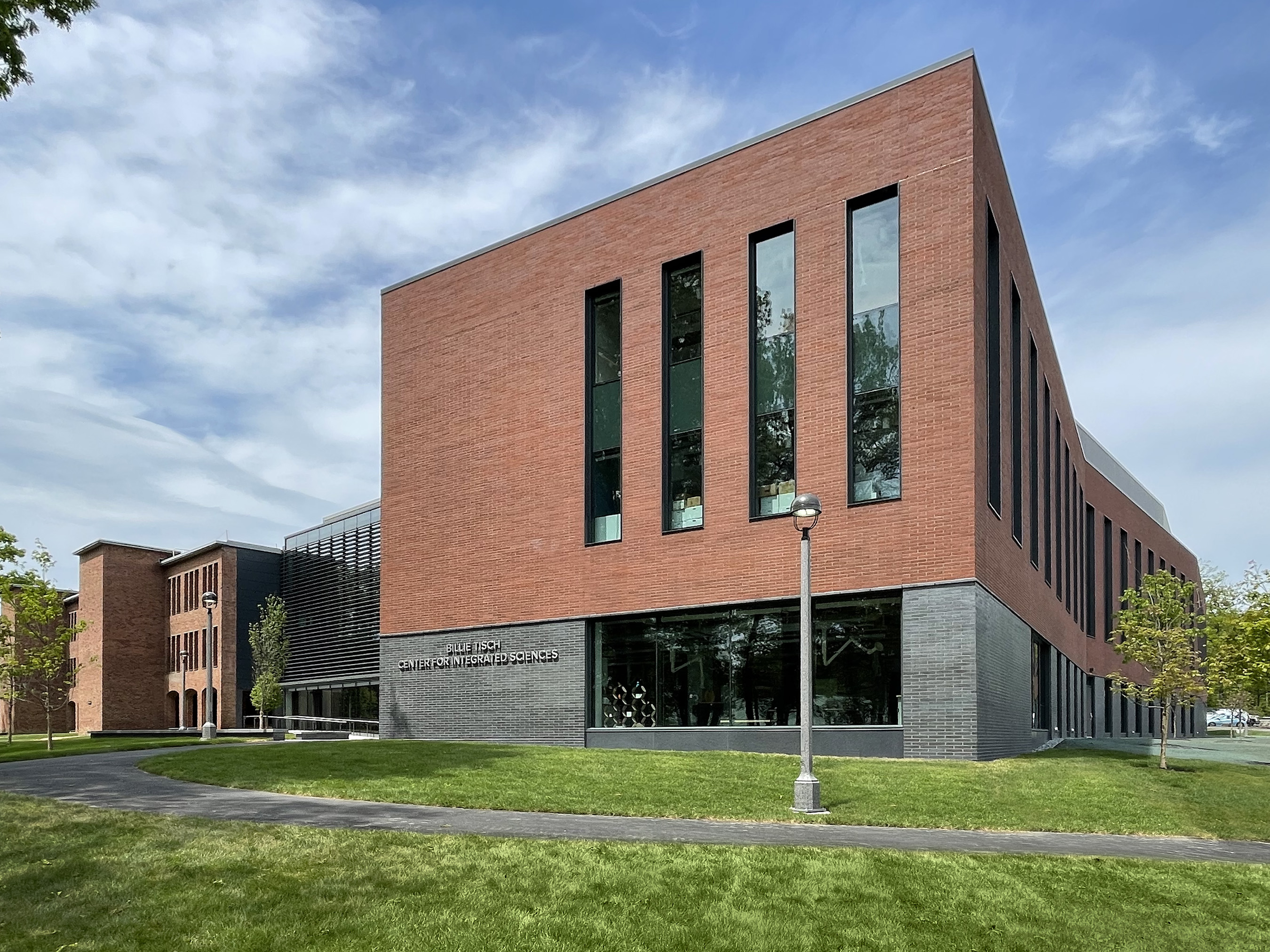
Skidmore College's new Billie Tisch Center for Integrated Sciences was named for alumna, trustee, and donor Wilma “Billie” Stein Tisch ’48.
This unique opportunity also reflects Skidmore's continuing investment in STEM, which includes the construction of the new Billie Tisch Center for Integrated Sciences, whose final phase is set for completion next year. Skidmore also offers a variety of opportunities for students to participate in research alongside faculty in a variety of fields through faculty-student summer research and other collaborative research experiences.
At the conclusion of the 10-week research project, the team presented their findings to a group of peers and interested students. They were joined virtually by a fellow pop-up program at the University of Wyoming.
Skidmore’s division was also selected as one of five to present in front of NASA scientists and fellow researchers at NASA’s headquarters in Washington, D.C. Bettigole and Haas traveled to D.C. in early August to deliver the team’s data, which will be permanently stored in NASA’s databases.
At NASA headquarters, Haas was encouraged to learn how invested the scientists were in agriculture as a vital contributor to climate solutions. “There was a lot of optimism about students doing passionate work to counteract and explain the climate extremes we have experienced globally,” he observed.
Haas, Wilson, and fellow researchers Schulteis and Willsey felt deeply invested along the way as well, finding hope and purpose in the work they were able to complete through the program.
“I actually grew up on a farm in an agricultural easement, so this project was close to my heart,” Schulteis said of her DEVELOP experience.
I learned a lot over the course of this program — from our science advisors and our NASA mentor. But I’ve also learned a lot of technical skill-building from my teammates, and now I can take those skills and continue the work on my own time.”Sam Schulteis, DEVELOP researcher
Wilson, who plans to apply his GIS knowledge in post-graduate environmental work, agrees.
“I'm from a small town in Vermont where there is a lot of agriculture and many small family farms, and you see a lot of them get swept up in developments,” he said. “It’s great to see that land trusts are now understanding that agricultural land has an intrinsic value for a community as well as in a climate sense. These little farms are going to be essential coming into the next hundred years.”
